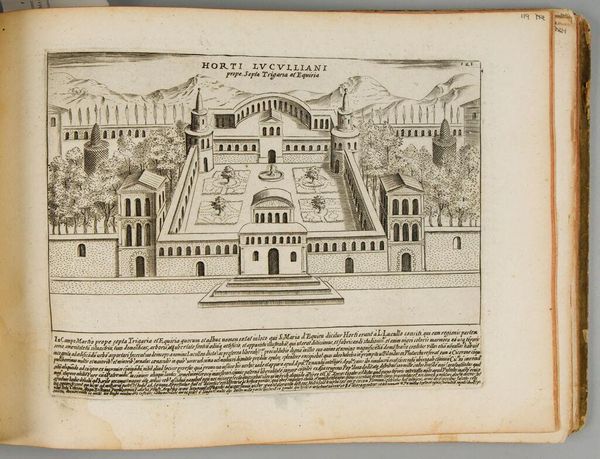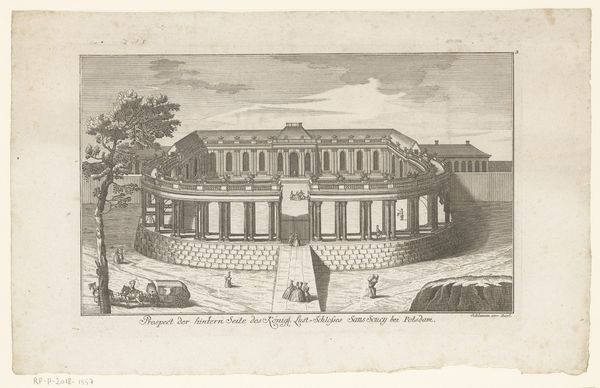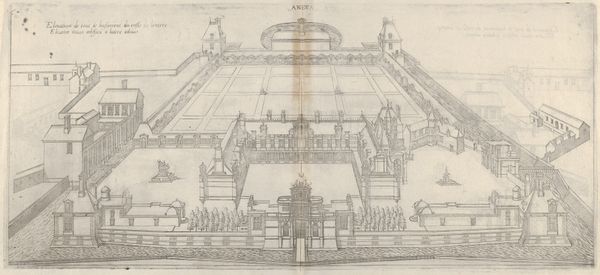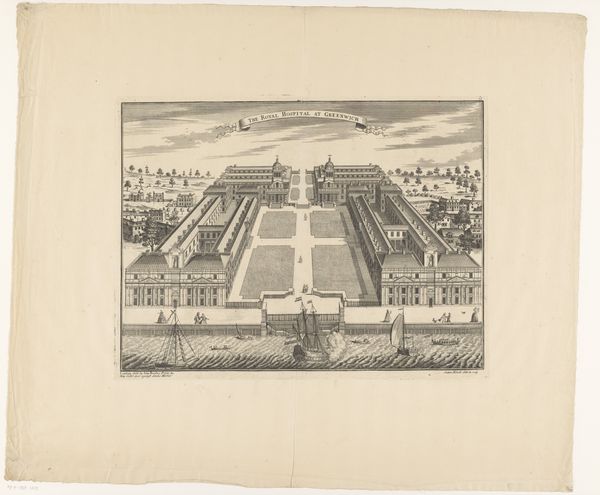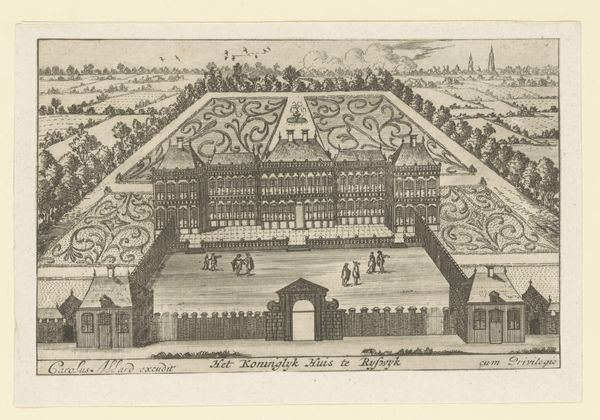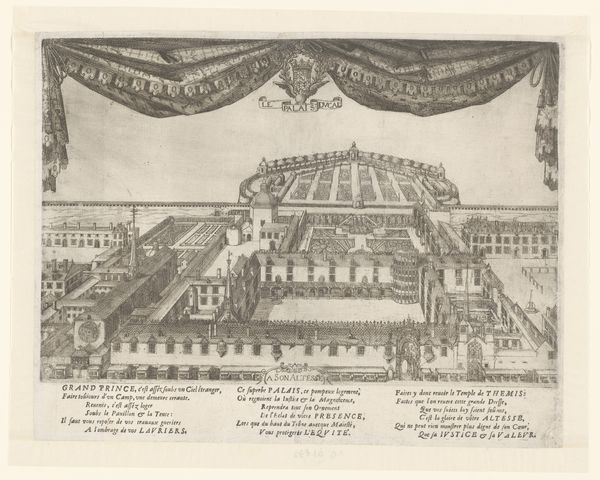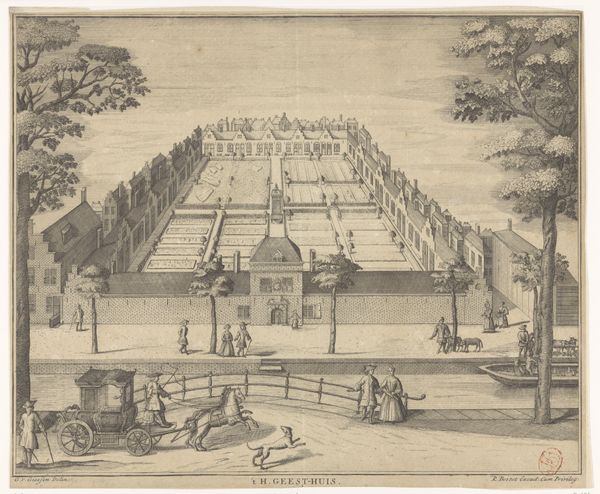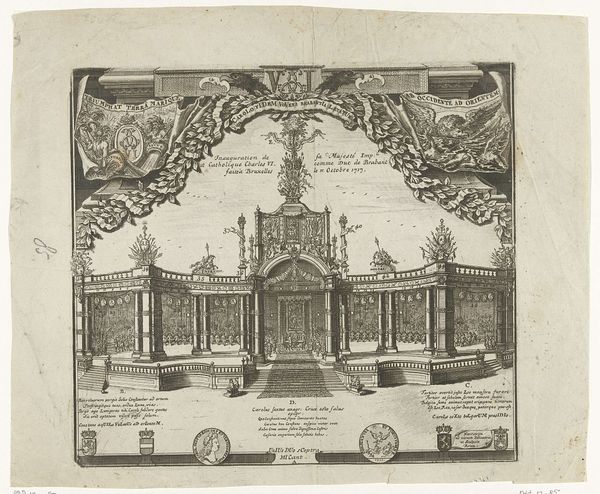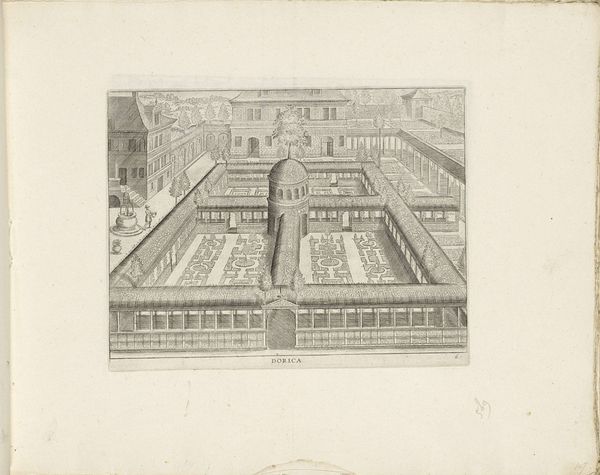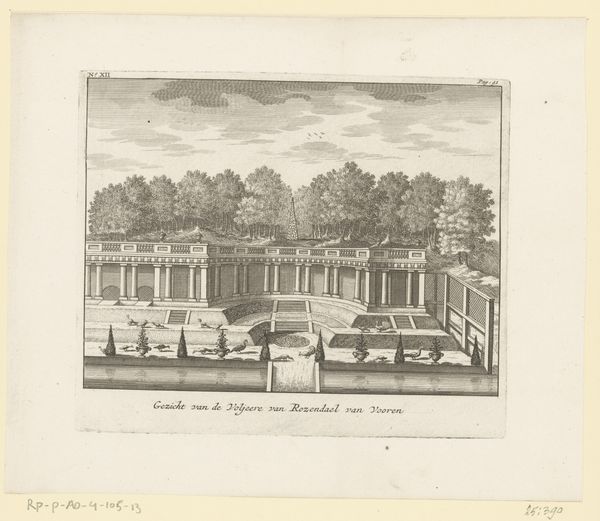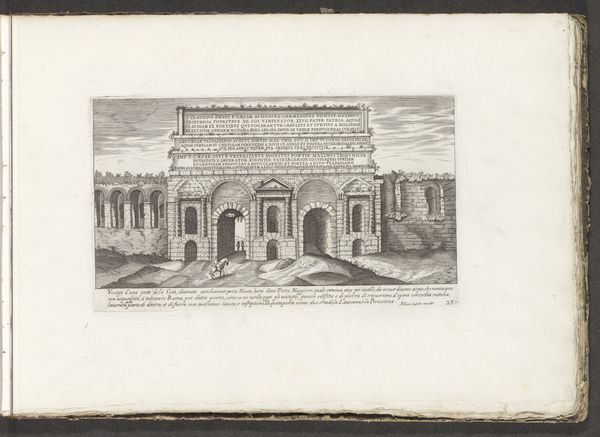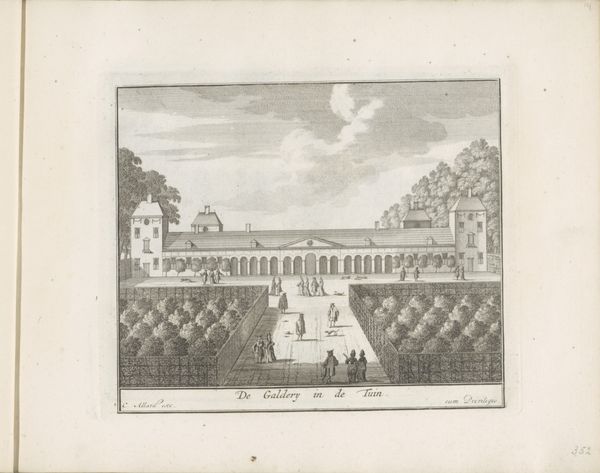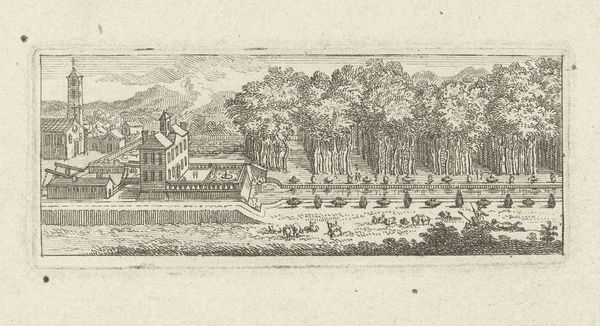
print, etching, architecture
# print
#
etching
#
asian-art
#
landscape
#
etching
#
cityscape
#
architecture
Dimensions: height 150 mm, width 205 mm
Copyright: Rijks Museum: Open Domain
Curator: Immediately, I’m struck by this kind of quiet orderliness. It feels almost like a stage set, carefully arranged for a very particular, formal drama. Editor: That’s an interesting take! You know, we’re looking at “Governor's Palace in Lantao,” an etching, dating back to between 1644 and 1646. What grabs me is how this image portrays a site of power and perhaps hints at the socio-political dynamics in Lantao. It now resides in the Rijksmuseum collection. Curator: Well, it’s certainly doing *something* interesting with perspective, isn't it? Everything feels flattened and deliberate. And the tiny figures! They give a sense of scale but also, they seem so… removed. Almost like pieces in a game. Do you get a sense that we are deliberately separated? Editor: Absolutely. This piece offers a controlled, almost sterile, view. It subtly showcases the Dutch East India Company’s perspective. See how it emphasizes structure and governance, maybe even downplaying the messiness of daily life. The image becomes a tool for demonstrating order, even colonial power. It says "we" controlled this, and maybe were impressed by it. Curator: Power through meticulous depiction, right? Those neat rows of trees and those very precise lines. It's almost as though the artist, anonymous as they are, wanted to instill a sense of respect for the Dutch colonial authority…Or did they? Maybe they longed for a very geometric world? Editor: It's plausible. There’s an attempt to render an exotic location palatable, making it comprehensible to a European audience through recognizable artistic conventions. Notice, though, that it avoids any deep engagement with local life and focuses instead on asserting a visual claim. It becomes about what they thought and did. Curator: I find the detachment oddly compelling. The distance is not coldness but observation. This almost bird’s-eye view creates a sense of watching something significant unfold but not quite being able to touch it. Editor: Exactly. It provides a glimpse into how artistic representation shaped and supported early colonial narratives. A story in a glance, with sharp lines. Curator: So the piece becomes about the cultural landscape as much as the physical. Food for thought!
Comments
No comments
Be the first to comment and join the conversation on the ultimate creative platform.
